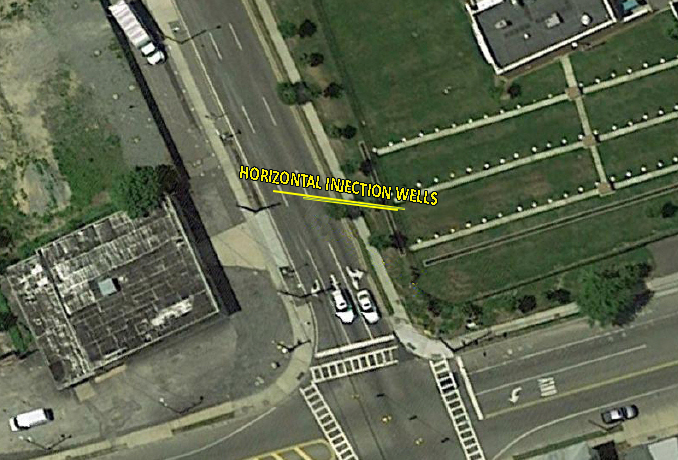For many years, from the late 19th century to the mid-1900s, plants operated nationwide to produce gas from coal or oils for lighting, heating and cooking. These gas and oil production plants were known as Manufactured Gas Plants (MGPs). By-products and residues of the manufacturing and purification processes were yielded including, tars, sludges, lampblack, light oils, spent oxide wastes, and other hydrocarbon products. Many of the by-products were recycled, but excess residues remained that contained polycyclic aromatic hydrocarbons (PAHs), petroleum hydrocarbons, benzene, cyanide, metals, and phenols. Traditional vertical remediation systems, for the most part, have proven effective for cleaning up MGP wastes. Many in the environmental industry are now learning that they can enhance MGP remediation with horizontal wells.
Directional Technologies Installs Horizontal Remediation Wells to Enhance Remediation at a former MGP Site
After installing a vertical remediation system, a former MGP site was still unable to obtain closure due to a portion of the plume that was inaccessible to vertical drilling. Horizontal Remediation Wells (HRWs) were installed as an upgrade to the vertical system and were easily connected to the existing oxygen injection lines. Horizontal Remediation Wells were used to precisely target and treat the down gradient impacts from the site’s former operations.
The MGP impacted areas consisted of the Operable Unit 1 (OU-1) onsite and areas of the adjacent offsite property. Soil and groundwater were impacted by former MGP operations that included coal tar residues. Previous remedial activities included source excavation, constructing a subsurface barrier, installing groundwater extraction wells, and in situ treatment of groundwater. The in situ remedy included installation of an oxygen injection line.
To enhance the remediation system, horizontal injection wells were installed at 12 feet below ground surface (bgs) and 17 feet bgs. The horizontal wells were then connected to the existing injection system.
Horizontal well construction included a 2-inch PVC sleeve. A 1-inch PVC riser with 5 feet of screen at the end was telescoped through the 2-inch PVC sleeve. Five feet of screen was then advanced to precisely inject oxygen at designated intervals.
The system significantly reduced groundwater impacts. Concentrations in groundwater are below the drinking water criteria as a result of the oxygen injection system.
